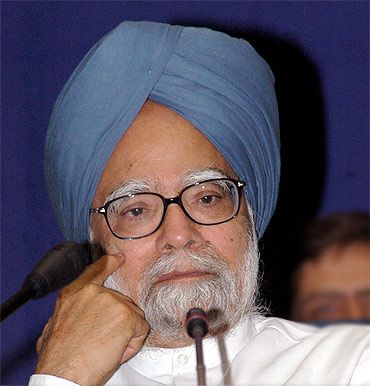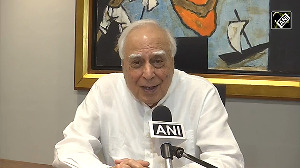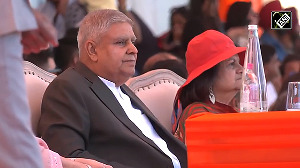The recent controversy surrounding the alleged attempt to bribe the Army chief for procuring military trucks and his leaked letter to the prime minister describing the hollowness in defence preparedness has once again raised a vital question on the probity and transparency in defence procurement, and the readiness of the defence forces to meet the ultimate eventualities for which billions of dollars of tax-payers' money are spent year after year.
The concern needs to be addressed not because it is raised by the chief of the third largest army of the world, but for safeguarding country's national security at a time when India's neighbours, particularly China is undertaking a massive military modernisation with a defence budget which now officially exceeds $100 billion (India's latest defence budget is $40.4 billion).
Defence preparedness has three vital, inter-related components: plan, budget and procurement. In the case of India there are glaring gaps in all these elements, although there have been some efforts to streamline certain aspects.
Defence planning in India has never been a serious affair and continues to be the same even today. The vital recommendation of the group of ministers for setting up a chief of defence staff which would be entrusted with the task of, inter alia, preparing an integrated plan for the three defence forces and ensuring the holistic development of national military capability through inter- and intra-service prioritisation, has not been implemented. Instead, an ad hoc arrangement in the form of headquarters integrated defence staff has been instituted which has proved to be toothless in bringing the kind of rigour in defence planning.
In the absence of CDS, which was visualised to act as an arbitrator of the services' demands, the attempt so far seems to be driven by what may be called budget maximisation through big-ticket purchases by individual services than focussing on the critical gaps that exists in the defence forces. On top of this, the present planning mechanism lacks an effective monitoring system to ensure that whatever plan has been prepared by the individual services has actually been implemented.
The critical shortages in the Army's combat power, as reported in the leaked letter to the prime minister, are long known. The efforts should therefore have been made long before the current situation has reached an alarming proportion.
The deficiency in planning is further aggravated by the absence of long-term resource commitment by the government. Unlike some other countries which guarantee a steady flow of resources to defence over a period of five years or more, India's commitment does not go beyond a year. Moreover, the annual commitment is contingent upon a variety of factors, including the economic and fiscal situations of the prevalent year. This has led to a high degree of fluctuations in the growth of annual defence allocation -- less than one per cent in 2003-04 and over 34 per cent in 2009-10. The lack of long-term guarantee of resources, however, entails a degree of ad hocism, as the 'last minute' communication of availability of funds necessitates an undue mid-course correction in procurement plans.
The weakness of planning and budgeting has further been aggravated by the deficiencies in the procurement system that the defence ministry has been desperately trying to overcome since the early 'nineties. The ministry of defence has expended a great deal of effort in putting up a Defence Procurement Organisation and revising its procurement procedures for both revenue and capital items. These efforts have no doubt succeeded to a large extent, evident from the ministry's ability to spend a majority of its allocated resources.
Nonetheless, there are certain weaknesses in the system that have prohibited it from spending its full allotted budget. A trend analysis of the modernisation budget would indicate that the services have surrendered a cumulative amount of nearly Rs 28,000 crore between 2001-02 and 2010-11. It is this unspent money that has created an inexplicable hollowness in the planned modernisation of the armed forces.
There are several weak areas in the procurement system that explains the surrender of funds and hollowness in defence preparedness. The first and foremost pertains to the ways qualitative requirements (eg, technical and performance parameters) of equipment are being formulated. It is noteworthy that QRs are not only the starting point of the procurement process but the most vital part in terms of determining the most cost-efficient equipment in a time-bound manner. Deficiency in QR formulation could lead to either retraction of bids (hence causing a delay), or costly procurement through uncompetitive bids.
The importance of this component has so far drawn little attention from the policy-makers, despite repeated concerns raised by various oversight agencies. In 2007, the Comptroller and Auditor General of India in a performance audit report on the Army's capital acquisition had observed that in many procurement contract QRs were found to be 'unrealistic with respect to actual requirements', 'inconsistent with the technology available' and at times 'unimportant, unverifiable and non-measureable'. Consequently, in 50 per cent of the cases which were audited by the CAG, specifications were changed after the bids were issued, causing unnecessary delay in modernisation process.
Four years after the supreme auditor made its observations, the situation today does not seem to have changed for the better. In a recent report submitted to Parliament in December 2011, the CAG nearly repeats the story it narrated in its earlier report. Coincidently, the report pertains to the Army's procurement of artillery guns -- a critical void as far as its present firepower is concerned.
Among others, the report highlights the Army's failure for four years in deciding on the features of the artillery it wants. It is noteworthy that the failure to freeze the requirements is not due to the rigidities of the procurement procedures, as suggested by the Army chief in his letter, but due to the indecisiveness of the Army itself.
The second biggest weakness in the procurement system is accountability. Although there has been an attempt at ensuring accountability by way of prescribing a detailed timeframe for each of the procurement functions, it has however not been so successful. In the present procurement process, the acquisition functions are diffused between the service headquarters and the acquisition wing of the defence ministry. The director general (acquisition), who heads the acquisition wing and is considered the head of capital procurement, does not have the full responsibility to ensure accountability, as many of the acquisition functions, such as formulation of QRs, trials etc, are beyond its power and purview.
In other words, if something goes wrong, there is not a single authority other than the defence minister that can be held responsible.
The biggest accountability issue, however, comes when a procurement case comes under the scanner of oversight agencies such as Central Vigilance Commission and Central Bureau of Investigation. In such cases, decisions are kept in abeyance till the end of investigations, which in India takes longer than desired. To make matters worse, the defence ministry follows an ill-conceived method of blacklisting firms found guilty of corrupt practices from doing business for certain years rather than penalising them monetarily for their wrong doing.
In the process, what the ministry loses sight of is the national security requirement. Suspending procurement cases pending the investigations or blacklisting of vendors does more harm to the country's defence preparedness than the economic woes it inflicts upon the concerned firms.
For example, the Ordnance Factory Board's Nalanda factory, which was conceived to produce the bi-modular charge system for 155 mm ammunition with technical cooperation from foreign firms, has repeatedly been held hostage to blacklisting. The initial contract with Denel (South Africa) was suspended in 2005 followed by the Israel Military Industries, which has recently been suspended along with five other firms (including two Indian firms) for 10 years from doing any business with the government. The MoD may take pride in the probity in banning the firms, but the fact remain that the OFB has lost over a decade of valuable time in setting up its plant for production of vital ammunition for the army.
There is no doubt that the Indian armed forces need to be constantly modernised and armed with equipment which are better than the ones with the adversaries. The army chief has rightly pointed out the deficiencies that exist today. However, what is not pointed out are the real reasons for such hollowness and the corrective actions needed to plug the holes, which are multi-faceted and as complex as the issues of planning, budgeting and procurement.
If the intent of the letter is to draw the attention of the highest political executive, it can only be ensured if the prime minister goes deep into these aspects of higher defence management.
Laxman Behera is attached to the Institute for Defence Studies and Analyses. These are his personal views and based on information in the public domain







